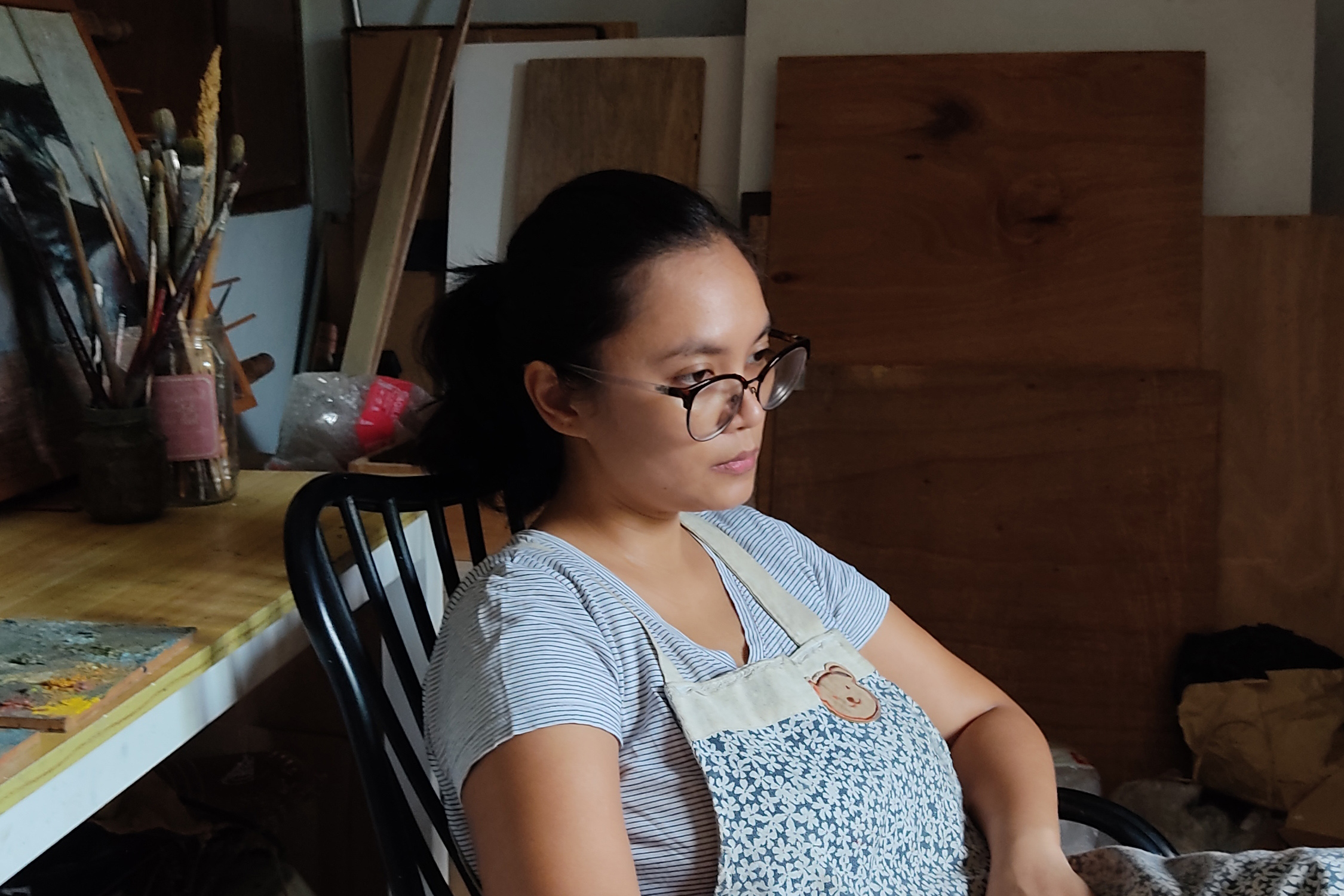This month on Cartellino, Hannah Nantes returns with an enthralling visual narrative ruminating on what exactly it means to be ‘home’, and the eerie sense of unease we can encounter in such settings.
In Garden of Lost Snails, Nantes begins by contemplating the loss of one's childhood home, highlighting the profound impact it has on one's identity. She notes, "The loss of a childhood home is the loss of a fundamental site of your past self, and your memory, precariously subjective as it is, becomes the sole repository of that part of you without its physical index." With that, an accompanying text written by her opens: “I haven’t been home in a while”, as if to return to something, someplace no less unfamiliar to her than it is to the reader.
The artist for the past year has been exploring family narratives, particularly ones hinged on female experiences, and in Garden of Lost Snails, she touches on an identity especially close to home: her mother. What she (and we) return to, as the story goes, is a home rebuilt, its many parts barely recognizable. Reconfigured and shifted about just as well, Nantes points out, are the relationships that had once been housed within it.
Her collection comprises ten works that convey a visual cohesion that at once feels different but looks to belong to one another. The artist hesitates to relate alienation to this collection, documenting the intricate relationships between individuals and the objects that populate their homes. She says, “The span of ten works visits those relationships in the way they have echoes in the supposedly previous objects shuffled about the house. And yet that means that it’s beyond alienation by virtue of a kinship that is marked by some affection, some vehemence, some sense of responsibility and self-preserving selfishness.”
A horror emerges from stumbling across these relics in a place once so familiar. Nantes suggests that the most haunting aspects of our relationship with our homes and relationships therewith stem from an incomplete sense of alienation. She muses, "Perhaps what I’m truly saying is that these sorts of incidences wouldn’t be as painful and as terrifying if the alienation was true and complete." It's a struggle to separate from our memories as they slowly fade over time, much more so than if we never held them at all. She continues: “What’s a snail without its house? A slug. And here they are, all over her fine things.”
Nantes also explores themes of class consciousness within her works, which have a historical underpinning. How does one begin to grapple with the challenges of living "with one foot in the difficulties of one stratum and the aspirations of another"? These struggles give rise to an "undiscerning appetite for material and intellectual security" that fuels a distinct yearning to assert values and identity. As Nantes grapples with these complex concepts and dilemmas, she finds that the domestic realm remains a concept firmly intact within this milieu. At the same time, much can be drawn from its unnerving proximity to absurdity, as it can so easily and so frequently—almost inevitably—lose its comfort and predictability.
These concepts are embodied by the processes of printmaking and collage. A reprographic process, hinged on countless repetitions, printmaking for Nantes represents a remarkable parallel to the human inclination for patterns. “In presenting continuity and/or disruption in this sense, it allows for inquiry regarding our self-appointed realities”. Collage reinforces these concepts. Taken out of context, fragments of a collage are “a proxy for the associations we wish to confront and yet recognizes the unseen others that are out there”.
Hannah Nantes previously presented The Hysterics on Cartellino. Her latest project, Theater of the Interior, a two-person show with Jericho Moral is on view at Art Underground in San Juan City from October 11 to 20.
Garden of Lost Snails continues on Cartellino until October 18.
About the artist:
Hannah Nantes is a visual artist based in Antipolo City. Her pursuit of art has involved research, writing, design, and teaching at the tertiary level before her current endeavour as a studio practitioner. From 2021 to 2022, initiated by an ArtFair Philippines grant, she undertook two residencies in Cavite leading to her first solo show “Named After Sorrow” wherein she tackled intergenerational female experiences plagued with gaps in the storytelling.
Through expressive figurative paintings, prints, and assemblage, her imagery pauses upon vignettes of mundane absurdity as well as existential anxieties. She often incorporates found objects and repurposed material to challenge the passivity in direct images and uses their histories, associations, and presence to negotiate with conflict, both personal and in society.

